July 19, 2023
Artist to Watch
KATARINA CASERMAN
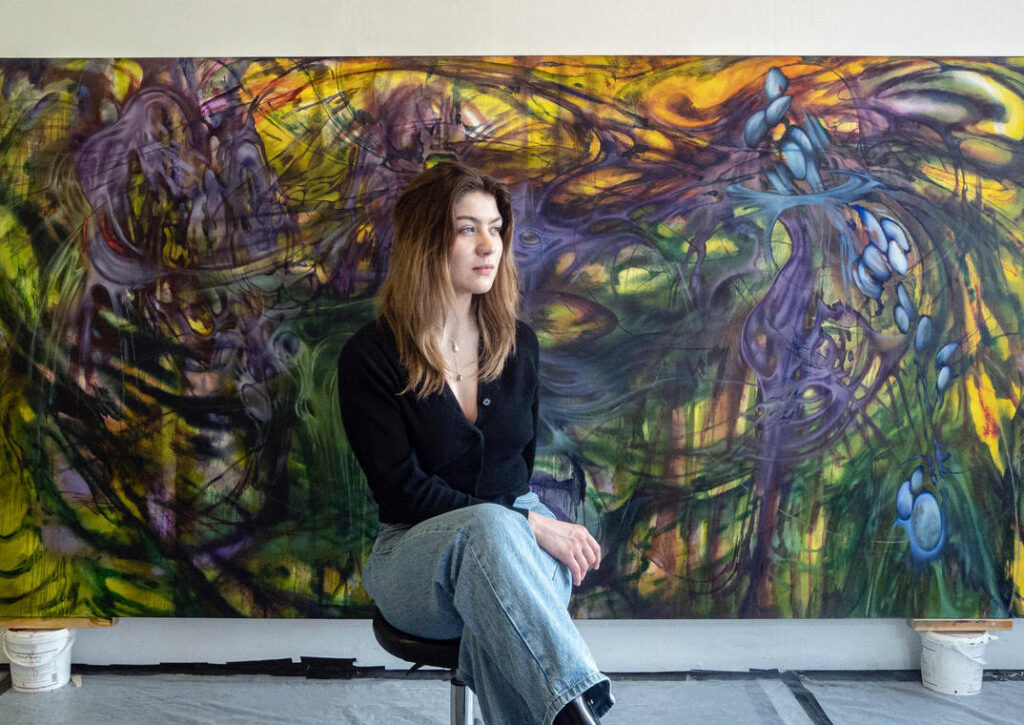
NB: What are some of your earliest memories of making art, and how does it relate to your work today?
KC: I often come back to this specific memory when we were children. We had these notebooks with blank pages that were called “memory books” and we gave them around to our friends and family so they would draw something in it and write something like ‘for the memory of Katarina’. I remember my mom one day she made this drawing of two deers, and back then it was one of the most beautiful drawings I’d seen. I remember I told myself ‘one day I’m gonna be as good as she is at drawing’. So my motivation was just to get as close as I could to my mother’s drawing.
With time I realized it’s just about practice and sometime around high school, I got pretty good at realistic drawings by observing things around me and copying them on paper. So these were my earliest memories of making art, trying to match my mental image with what I was drawing on paper. This always brought me comfort and happiness and something that has always made me feel something and luckily for me I was also good at it.
Now it’s of course very different. For me it’s not enough to just look, and mimic what I’m seeing. It’s more about ‘what else is there’? It’s not enough to just observe the world around me and then reflect upon it. I aim to turn inwards, reflect upon that and relate it to the external in order to create alternative structures of the visible reality.
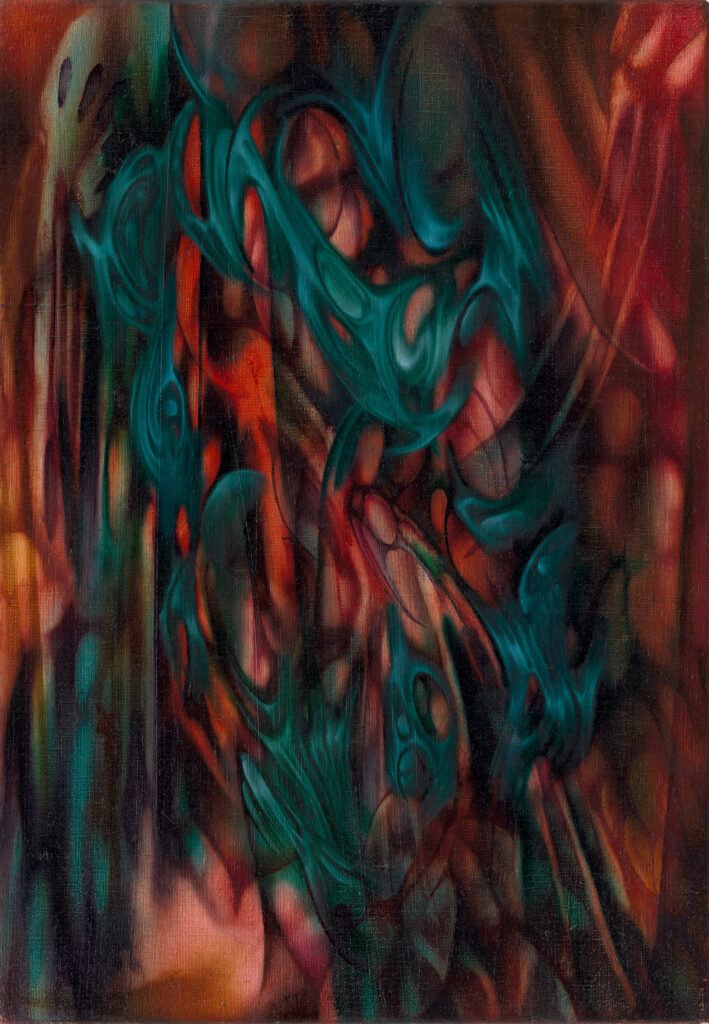
NB: Can you describe the process when you’re starting a new painting, where do you begin? How do you move through it?
KC: I’ve attempted to do sketches many times in the past but it’s just not working for me. My body reacts completely differently in front of a canvas than it does sitting down and making a tiny paper sketch. I lose the momentum and it feels forced to match the painting to the sketch.
I usually begin by making a very thin layer of oil paint and then I take it off with a cotton cloth, creating an image by bringing back the whiteness of the canvas. The very first stages feel more like building or constructing than solely painting. I let the layers interact with each other, see the direction of different drips and just let the paint and gravity do its thing and let it sit for a bit. There’s a lot of sitting time involved because I need to be patient to recognize which trajectory the painting wants to go. I also need to take into consideration that the painting will change over a span of a couple days because of all the drying and dripping and other micro chemical processes. So this is how it usually goes, there’s a lot of waiting and observing and reacting upon it over and over again.
NB: So it requires a lot of patience, right?
KC: Oh yes absolutely, a lot of patience. Especially because there are many things that I do in the painting that are rather complex and I often forget how difficult they are. It’s quite simple though, complex forms require a high level of complexity and it’s impossible that you would achieve complex forms with simple solutions.
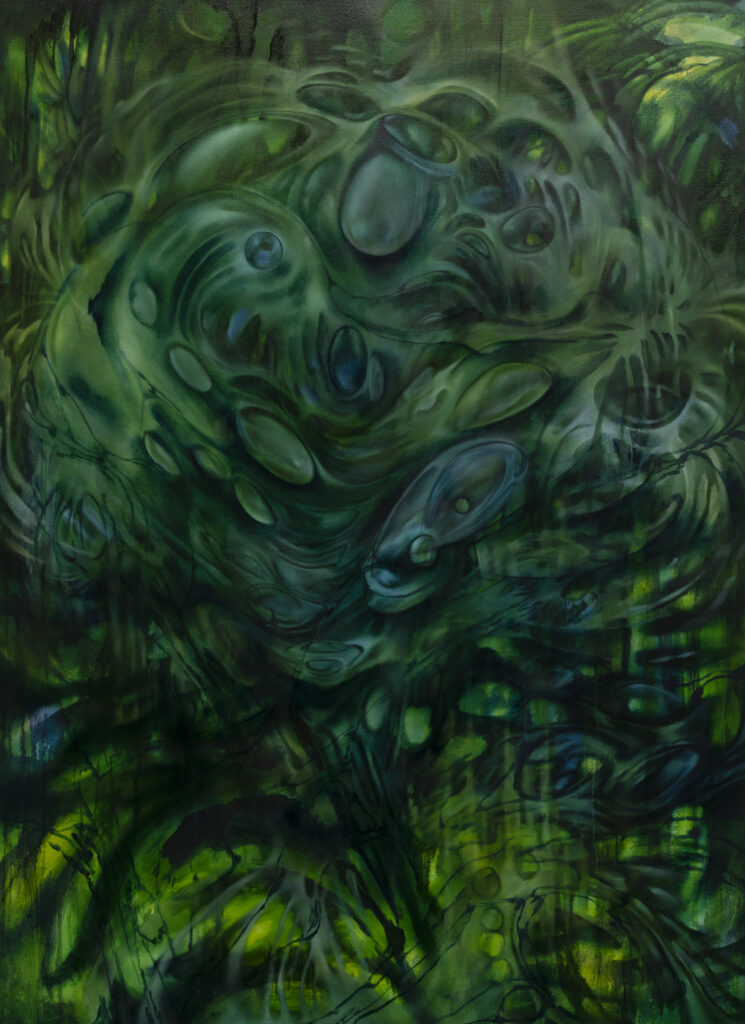
NB: Your work exists between opposing themes: it is organized yet chaotic, strange yet familiar, and dynamic yet still. Can you tell us more about these themes and opposites/binaries in your work?
KC: I used to say that my work has this notion of the opposite. I’ve been investigating this for over a year, ever since I came across Mary Shelley’s novel Frankenstein in which the use of words is so specific in how to describe certain conditions. For example when she says that the creature is reanimated, it goes from being ‘dead’ to being ‘undead’. So the creature was neither alive nor dead, it was in the zone of being ‘undead’. It was a walking contradiction. That just provoked me into thinking about how we can use language in order to expand the possibilities of the opposite.
For instance, if I ask ‘what’s the opposite of black?’ the answer would probably be white, which would mean it’s white and nothing else but white. If you say ‘non black’, then it would mean it’s everything but black, giving you more possibilities of what the opposite can be. When I talk about my work I use the proposition of ‘non’, meaning I don’t say there’s order and chaos but rather ‘non-chaos, artificial/non-artificial, movement/non-movement and so on. This sets the paintings in almost a ‘third zone’. I’m playing with the idea of opposites that exist in the same reality, so it has this notion of impossibility, like with these spaces where you constantly have some sort of a glimpse of light and at the same time a glimpse of darkness.
So it’s not about depicting something in particular, or descriptive, but they are setting a mood. When you stand in front of the painting you are getting primed/ready for the zone that you are about to enter, and this zone is the painting itself, but there is a specific mood that surrounds the painting.
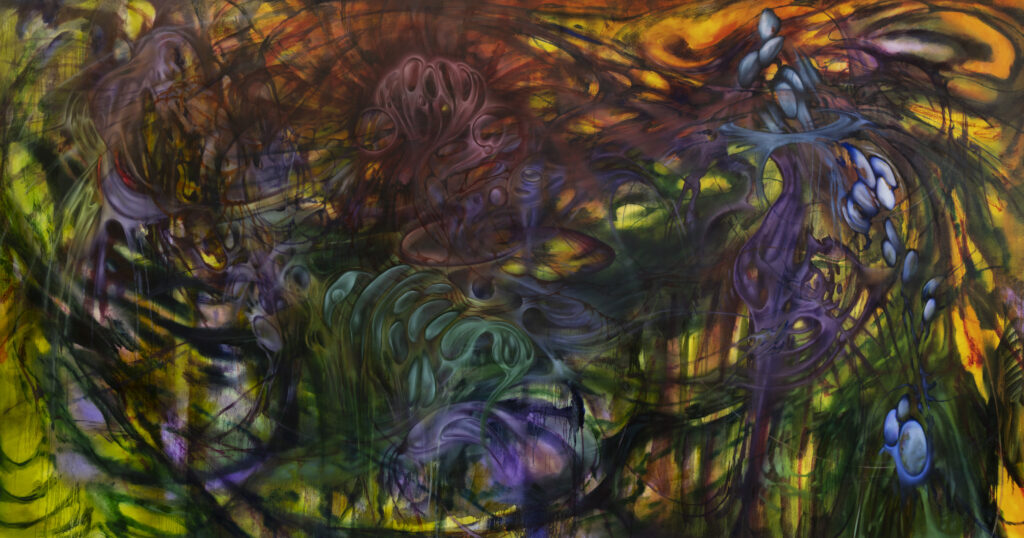
NB: How does color relate to these themes in your process?
KC: It’s very, very, intuitive when it comes to color. At the beginning I don’t overthink it, I use any color that resonates with me in that moment because I know that the specific color will not determine the outcome. I usually just like to play with layering and getting different shades that don’t necessarily exist if they were only on one layer. These are colors you get once you layer one color over the other, in order to get a third one. It’s the optical mixing of the colors instead of just a physical one. I enjoy playing around with this because it gives me a unique experience when I’m moving around the painting. It seems as if the painting is changing all the time due to its multiple layered structure.
NB: Where are you currently drawing inspiration from? What artists, movies, music are you looking at?
KC: I’m not being the best artist right now because I don’t think I’m seeing enough art shows and I’m not intentionally looking at any visual art. On the other hand I am looking at all sorts of things every day because Instagram exists. I’m also the last person in the world to watch ‘Twin Peaks’ by David Lynch so this is something I’m currently obsessed with. It feels as if the whole series puts your brain into a dreamlike state so everything suddenly has a thin layer of ‘Twin Peaks’ over it.
I used to listen to a lot of music while I painted, and I still do, but now I mainly listen to podcasts or audio books. I recently realized that music has too strong of an impact on me. It will either make me paint faster, or slower, or evoke memories, which is very distracting. I switched to podcasts and audiobooks because as you follow the story, you’re in an ‘in between zone’ of being present in the painting, yet not fully there. I think of it being similar to how a pianist is when having a performance. When they are playing they are in this ‘flow’ estate where their body is acting instead of their brain.
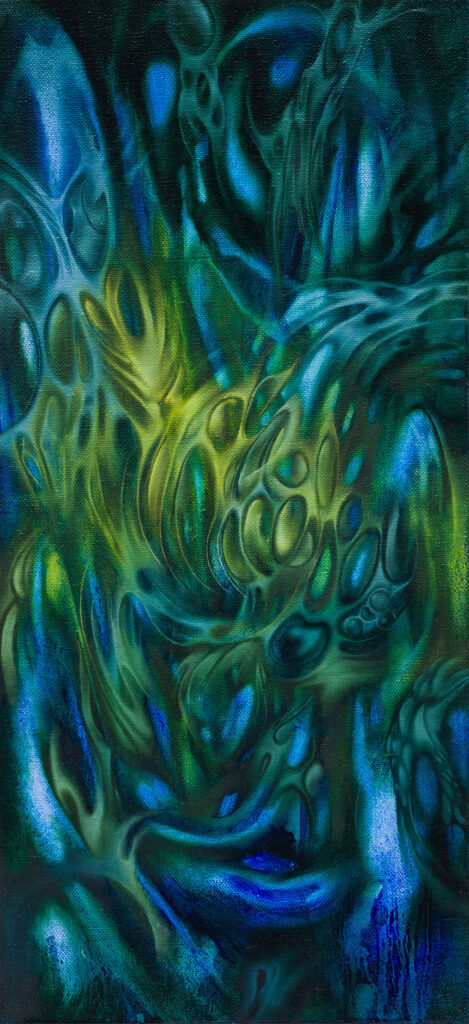
NB: Can you tell us about any upcoming projects or exhibitions that you’re excited about?
KC: Yes! I’m represented by Tabula Rasa Gallery, and we have so many exciting projects coming up this year. I do have a group show in Beijing, in November and before that I’m also having a group show at a London-based gallery, which will be announced very soon and that I’m very excited for. Then there’s also art fairs and a couple of other things as well so it’s gonna be a very, very, busy year. To which I always add: being busy is a good problem to have.

